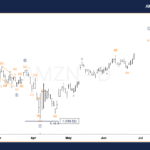Hedge funds are often marketed as high-return, low-correlation investments that can provide diversification benefits to traditional portfolios. Investors must look beyond the marketing pitch, however, to fully understand the risks involved. Leverage, short selling, and derivatives can introduce hidden vulnerabilities, while fee structures may encourage strategies that generate steady gains but expose investors to occasional deep losses.
This post is the second in a three-part series examining hedge fund literature to assess their risks and their diversification potential and offering insights on when and how they might fit into an investment strategy. In my first post, I show that the research suggests skill and alpha are scarce and difficult to obtain in the hedge fund market, especially among those listed in commercial databases.
Hedge Fund Risks
Due to the permitted use of leverage, short selling, and derivative product strategies, some hedge funds are highly volatile. Their asymmetric fee structures also incentivize the adoption of investment strategies with negatively skewed outcomes and high kurtosis. In other words, many hedge funds tend to deliver modest regular profits — possibly to generate performance fees — at the cost of occasional deep losses.
Hedge funds using leverage also bear financing risk, which materializes when the fund’s main lender ceases to provide financing, requiring the fund to find another lender or liquidate assets to pay off its debt. Investors should pay close attention to financing risk. Financing risk is significant, as Barth et al. (2023) report that almost half of hedge fund assets are financed with debt.
Also important is liquidity risk, which materializes when too many investors redeem their shares simultaneously. This risk is particularly serious for hedge funds holding relatively illiquid assets. Under a high redemption scenario, the fund may have to sell its most liquid, highest-quality assets first, leaving the remaining investors with a less valuable portfolio, leading to more redemptions.
Under another scenario, the manager may freeze redemptions to prevent a liquidation spiral. Hedge funds often reduce liquidity risk by imposing an initial lock-up period. While such restrictions hamper investors’ ability to dispose of their investment at will, Aiken et al. (2020) suggest hedge funds with a lock-up tend to outperform due to their higher exposure to equity-mispricing anomalies.

Diversification Properties
Research generally acknowledges modest diversification benefits with hedge funds. Amin and Kat (2009) found that seven of the 12 hedge fund indices reviewed and 58 of the 72 individual funds classified as inefficient on a stand-alone basis can produce an efficient payoff profile when mixed with the S&P 500 Index. Kang et al. (2010) found that the longer the investment horizon, the greater the diversification benefits of hedge funds.
Titman and Tiu (2011) studied a comprehensive sample of hedge funds from six databases and concluded that low R-squared funds exhibit higher Sharpe Ratios, information ratios, and alphas than their competitors. In other words, low-correlation hedge funds tend to deliver higher risk-adjusted returns.
Bollen (2013) also looked at low R-squared hedge funds and came to a different conclusion. He constructed large portfolios of multiple zero R-squared hedge funds. He found that these portfolios have up to half the volatility of other hedge funds, suggesting that, despite appearances, zero R-squared hedge funds may feature substantial systematic risk. The author also finds that the low R-squared property increases the probability of fund failure.
Brown (2016) claims that hedge funds are legitimate diversifiers, but investing in this type of product without deep operational due diligence is outright dangerous. Newton et al. (2019) reviewed 5,500 North American hedge funds that followed 11 distinct strategies from 1995 to 2014. They report that six strategies “provide significant and consistent diversification benefits to investors, regardless of their level of risk aversion.” Four strategies offer more moderate benefits, and only one strategy does not improve portfolio diversification. Interestingly, their measure of diversification benefits accounts for skewness and kurtosis.
Finally, Bollen et al. (2021) found that despite a severe decline in their performance since 2008, a 20% allocation to hedge funds still reduces portfolio volatility but fails to improve Sharpe Ratios. They conclude that a modest allocation to hedge funds may be justified for risk-averse investors due to their reliable diversification benefits.
Beyond Traditional Risk Measures
Research shows that hedge funds can help diversify portfolios. However, investors should not oversimplify the issue. First, traditional risk measures like standard deviation and correlation are incomplete. Skewness and kurtosis must be measured or estimated in some way. Products with low historical standard deviation may hide the possibility of occasional extreme losses or a negative expected return. Investors must thoroughly understand the fund’s investment strategy and how it may behave under adverse conditions. Investors must also reflect on what risk means under their specific circumstances. Sacrificing too much expected return for diversification could harm financial health in the long run.
Key Takeaways
Hedge funds can serve as legitimate diversifiers, but blind allocation is risky. While certain strategies have shown consistent diversification benefits, others introduce financing, liquidity and extreme loss risks that investors must evaluate carefully. Traditional risk measures like standard deviation and correlation don’t always capture the full picture — skewness, kurtosis, and tail-risk exposure are critical considerations.
My final post in this series will explain why I do not recommend hedge funds.







